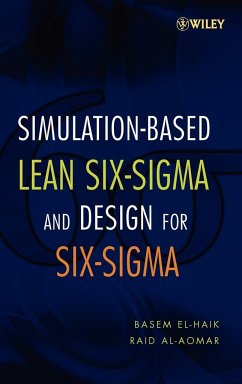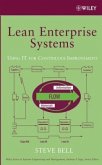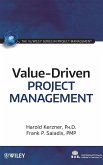Simulation-based Six Sigma: The Next Generation of Six Sigma Evolution
This book offers a complete roadmap to conducting and executing Lean Six Sigma and Design for Six Sigma (DFSS) projects in service and transaction environments that are conducive to simulation modeling, including mapped tools, deliverables, and methods. Readers discover how Simulation-based Six Sigma methodology reduces project cycle time, cost, and effort from conception to validation. Most importantly, the Simulation-based Six Sigma design identifies customer and business requirements, conceptualizes several solutions, selects a vulnerability-free solution, optimizes that solution, and then validates and verifies the optimum solution, leading to breakthrough performance.
All the guidance needed to take advantage of the many tools in Simulation-based Six Sigma and Simulation-based DFSS is clearly set forth. The implementation, theoretical, and practical aspects of Six Sigma and DFSS and their associated toolboxes and methods are all set forth in detail, including:
_ Integrating Voice of Customer and the Voice of the Business
_ Axiomatic Design
_ Design of Experiment
_ Quality Function Deployment (QFD)
_ Process Mapping
_ Discrete Event Simulation (DES)
_ Value Stream Mapping (VSM)
_ Lean Techniques, including JIT, kanban, SMED, Kaizen, TPM, and more
This book is ideal as a reference for corporate executives, quality control managers, and service industry practitioners including manufacturing, Six Sigma belts and champions who want to streamline processes, minimize risk, and maximize benefits. It serves as a complete training manual for Six Sigma and DFSS in a simulation environment. With its many case examples, it is also a superior textbook for graduate students in management, operations, industrial engineering, and quality assurance.
This book offers a complete roadmap to conducting and executing Lean Six Sigma and Design for Six Sigma (DFSS) projects in service and transaction environments that are conducive to simulation modeling, including mapped tools, deliverables, and methods. Readers discover how Simulation-based Six Sigma methodology reduces project cycle time, cost, and effort from conception to validation. Most importantly, the Simulation-based Six Sigma design identifies customer and business requirements, conceptualizes several solutions, selects a vulnerability-free solution, optimizes that solution, and then validates and verifies the optimum solution, leading to breakthrough performance.
All the guidance needed to take advantage of the many tools in Simulation-based Six Sigma and Simulation-based DFSS is clearly set forth. The implementation, theoretical, and practical aspects of Six Sigma and DFSS and their associated toolboxes and methods are all set forth in detail, including:
_ Integrating Voice of Customer and the Voice of the Business
_ Axiomatic Design
_ Design of Experiment
_ Quality Function Deployment (QFD)
_ Process Mapping
_ Discrete Event Simulation (DES)
_ Value Stream Mapping (VSM)
_ Lean Techniques, including JIT, kanban, SMED, Kaizen, TPM, and more
This book is ideal as a reference for corporate executives, quality control managers, and service industry practitioners including manufacturing, Six Sigma belts and champions who want to streamline processes, minimize risk, and maximize benefits. It serves as a complete training manual for Six Sigma and DFSS in a simulation environment. With its many case examples, it is also a superior textbook for graduate students in management, operations, industrial engineering, and quality assurance.









